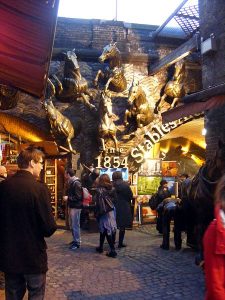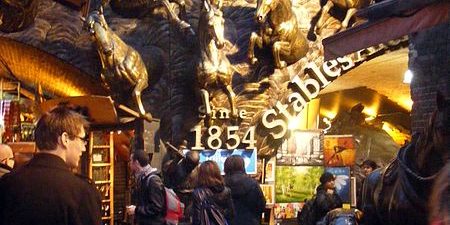Transfer from Camden Town (WC1) to Gatwick Airport
 Probably the most notable building in Camden(WC1) is the British Museum. There’s no doubt in mind that British Museum is one of the most known buildings in the world and one of England’s most important constructions. It is widely thought to be one of the world’s greatest museums of human history and culture and has an enormous collection of 8 million objects that is believed to be one of the largest and most comprehensive existing as well as the finest one. The pieces of the collection come from all continents and illustrate the story of humanity right from its beginning.
Probably the most notable building in Camden(WC1) is the British Museum. There’s no doubt in mind that British Museum is one of the most known buildings in the world and one of England’s most important constructions. It is widely thought to be one of the world’s greatest museums of human history and culture and has an enormous collection of 8 million objects that is believed to be one of the largest and most comprehensive existing as well as the finest one. The pieces of the collection come from all continents and illustrate the story of humanity right from its beginning.
The person we have to thank to for this gigantic museum is Sir Hans Sloane which founded the museum with his collection. The building was established in 1753 but has only became open to public 6 years later, in Montagu House, where the current museum exists. Montagu House was the younger brother of the British Museum. The expansion of the British colonial footprint has resulted in the construction of various annexed institutions as which led to the expanding of Montagu House.
During his life, Sloane gathered more than 71,000 items which he desired to be protected and kept intact following his death. So he bequeathed the entire collection to King George II for England in return for a payment of £20,000 to his heirs.
The trade was made on 7 June 1753, an Act of Parliament founded the British Museum.
The starting collections generally comprised books, manuscripts and natural specimens with some antiquities and ethnographic fabric. In 1757 King George II offered the ‘Old Royal Library’ of the sovereigns of England and with it the benefit of copyright receipt.
The British Museum offered access to the public on 15 January 1759 . It was first housed in a seventeenth-century mansion, Montagu House, in Bloomsbury on the site of today’s building. It didn’t cost any penny to enter the British Museum and it was open to ‘all studious and curious Persons’.
Apart from the two World Wars, the Museum has stayed open ever since, progressively raising its opening hours and grown from 5,000 visitors per year to today’s 6 million.
The coming centuries saw the museum make a number of impressive acquisitions like the Rosetta Stone(1802), the Parthenon sculptures(1816), the library of George IV’s father which is held in today’s quadrangular building designed by Sir Robert Smirke.
A great number of the items displayed in the British Museum today were acquired through excavation abroad. As an example stands its Assyrian collection that was the basis for the understand of cuneiform(an ancient Middle Eastern script) or the Rosetta stone that resulted in the discovery of Egyptian hieroglyphic script(a symbol-based script).
Another person of great importance for the museum and the collection itself was Sir Augustus Wollaston Franks which greatly improved the collection of medieval materials, adding British and abroad medieval items and also prehistoric, ethnographic and archaeological material from Europe and beyond.
The British Museum also witnessed a great increase in visitors in the 19th century as it attracted great crowds of all ages and social classes.
By the end of the 19th century, The British Museum’s number of items had become so big that the Museum building could not house all of them. In 1895 the trustees bought the 69 houses around the Museum with the purpose of destroying them and developing around the West, North and East sides of the Museum. The initial phase was the development of the northern wing starting with 1906.
During this time, the more and more items were added to the collection. Emily Torday gathered items in Central Africa, Aurel Stein in Central Asia, D.G. Hogarth, Leonard Woolley and T. E. Lawrence excavated at Carchemish. In 1918, due to a threat of bombing, some artefacts were moved to several places including a Postal Tube Railway at Holborn, the National Library of Wales and a country house near Malvern. When the items were returned from the places they’ve been kept until 1919 some of the artefacts were discovered to have damaged. A short-term preservation laboratory was built in May 1920 and turned to a long term department in 1931. It is today the oldest in continuous existence. In 1923 the British Museum welcomed over one million visitors.
The 20th century witnesed a excellent development in public services. The initial brief guide to the Museum was released in 1903 and the very first guide speaker was employed in 1911.
By 1970, there was an effective program of gallery restorations and an education service and publishing company had been set up. Extra public amenities were offered in a sequence of building works. These comprised the Duveen Gallery, designed to house the Parthenon Sculptures (1939/62).
In 1973 the library grew to become part of a new organisation, the British Library. This organization stayed at the Museum until 1997, when the books were moved to a new building at St Pancras.
In the space vacated by the library was built The Queen Elizabeth II Great Court, which displays the latest public extension at the Museum. It is the biggest covered public space in Europe. In the middle the restored Reading Room can be located, while all around and below new galleries and an education center were added.
The celebration of the 250th anniversary of the British Museum led to the restoration of the King’s Library, and the launch of a new permanent display – Enlightenment: Discoverinthe world in the eighteenth century.
Transfer from London Gatwick Airport to Camden (WC1) by Rail:
In order to get a transfer from London Gatwick Airport to Camden by rail, you need to take the National Rail Service to London City Thameslink Station in a journey that will last approximately 39 minutes. Other transport options include taking a taxi transfer from Gatwick Airport to Camden .
Transfer from London Gatwick Airport to Camden (WC1) by Car:
In order to get from Gatwick Airport to Camden by car, you have to take the M23 motorway followed by the A23 road. The distance between Gatwick Airport and Camden is of 33.6 miles.
Transfer from London Gatwick Airport to Camden (WC1) by Taxi:
A Taxi Transfer from London Gatwick Airport to Camden with 247 Airport Transfer will take approximately 1 hour and 30 minutes. The Gatwick Airport transfer to Camden will cost approximately 57 GBP for a saloon car.
Image: Wikipedia

